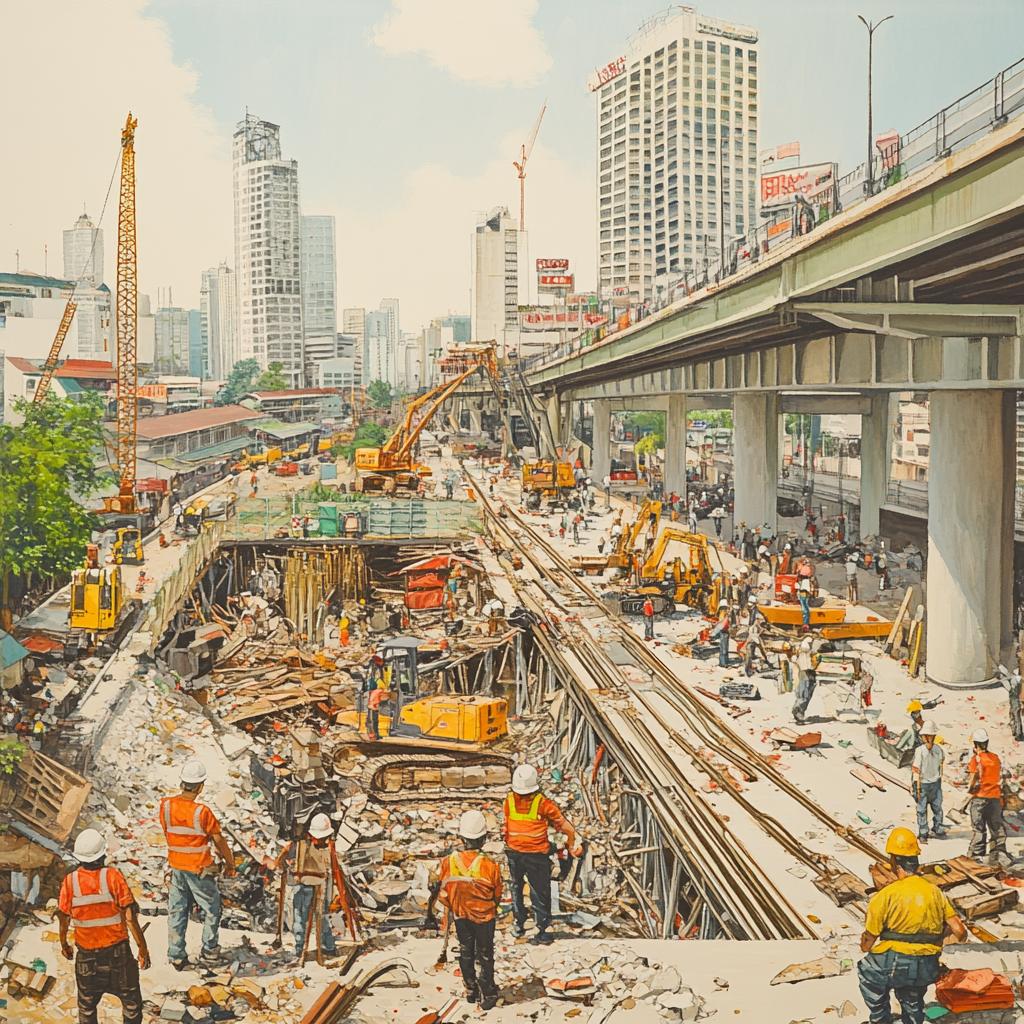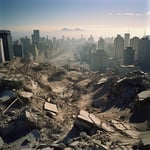A sense of urgency has gripped the bustling city of Bangkok as its diligent officials spring into action following a massive earthquake that reverberated across borders. With seismic waves cascading into Thailand from a staggering 7.7-magnitude earthquake in neighboring Myanmar, the city finds itself grappling with both unease and a commitment to resilience.
The trail of destruction navigates through the heart of the city, leaving behind a sprawling mosaic of structural damage. Among the casualties of this natural havoc is a bridge, once standing tall, now crippled, connecting two lofty condominiums—a stark visual somberly painted in shades of concern.
The tireless Bangkok Metropolitan Administration (BMA), steered by the astute and responsive Bangkok Governor, Chadchart Sittipunt, has launched a comprehensive mission to remedy this fractured metropolitan landscape. With over 2,000 reports of damage cascading into the council’s annals, each case is a story—a piece of the grand puzzle yet to be solved.
“Every report we receive is a testament to our need for preparedness. We will not rest on our laurels,” Governor Chadchart declared with unwavering dedication. His proactive stance energizes the city’s response mechanism, pivoting around the Traffy Fondue system—a technological marvel enabling precise inspections leveraging the power of GPS.
Through digital precision and human tenacity, the city as a unified force presses on, backed by a legion of engineers equipped with willingness and expertise. Governor Chadchart’s declaration is far from mere rhetoric; it is a call to arms in a silent battle against time and uncertainty.
Bangkok’s deputy governor, Wisanu Subsompon, places even finer details into the meticulous orchestration, revealing that over 700 structural cases have been tee’d up for immediate inspection. Both officials are locked in a dance of cooperation with the department of public works, a partnership aimed at dissecting the damage and stitching the city back together—one building at a time.
Severe cases take precedence in this hierarchy of urgency, as teams navigate the city’s veins, each inspection a critical pulse in the heart of a disaster-stricken metropolis. The city already stands designated as a disaster area, a formal acknowledgment of the chaos woven into its streets and structures—a formality wearing its reality like a shroud.
With City Hall transformed into a nerve center of reconstruction efforts, a resolute Bangkok looks towards the horizon with hope. The task is Herculean, yet in the collective spirit of its people and leaders lies an unshakeable faith. Through cracks and crevices, beneath the tumult of masonry and uncertainty, a resilient Bangkok emerges—undaunted, undeterred, and unified against the aftershocks of fate.
As the sun casts its reassuring light on March 29, 2025, a city reclaimed weaves a narrative not just of survival, but of unyielding spirit, standing taller than any high-rise that marks its skyline.


















Governor Chadchart is doing an amazing job! It’s impressive how he’s handling the crisis with such efficiency.
I agree, but it seems like there’s still so much damage left to repair. Can the city really bounce back anytime soon?
It’s a long road ahead but the level of commitment we’ve seen gives me hope. The city has overcome adversity before.
I think the city should have been better prepared for an earthquake of this magnitude. This shouldn’t have been such a surprise.
It’s easy to say in hindsight, but preparation isn’t always straightforward for rare events like this.
True, but a city like Bangkok should have some risk assessments and protocols in place.
I’m really impressed with how quickly technology is being utilized to address the damage. Traffy Fondue is revolutionary!
Honestly, without these modern systems, recovery would be much slower. It’s a sign of the times, isn’t it?
Absolutely, it’s amazing to see how innovation can aid disaster recovery efforts so effectively.
Isn’t it ironic how high-tech solutions are now a necessity even in crisis management? It’s kind of scary to rely on tech so much.
Instead of praising Governor Chadchart, we should be critical of the fact that such infrastructures were vulnerable to this extent.
It’s an understandable concern, but focusing on blame might detract from the recovery efforts. Balance is key.
Without accountability, though, how do we improve future infrastructure resilience?
I’m glad the city is prioritizing human willpower alongside technology. Both are crucial for rebuilding.
What about the mental health support for residents during this time of crisis? Are there any initiatives there?
I’ve heard of community support groups forming, but official mental health programs would surely be needed.
This sounds like a massive undertaking! Props to the city officials who are putting in the work.
Indeed, but I hope they don’t burn out. The stress must be immense.
They’ll need community support to sustain this energy, for sure.
I hope this recovery effort incorporates sustainable practices. A disaster could be a chance to build back greener.
Is there an update on the bridge? Infrastructure like that is so vital to city life and economy.
While rebuilding, how about looking at future-proofing the city against possible future seismic activities?
I was in Bangkok during the quake. The panic was real, but I’ve never seen people come together like that before.
Thanks for sharing your experience, Nina. I’m sure it must have been terrifying, but it’s heartwarming to hear about solidarity.
City officials need more transparency with updates. The public deserves frequent reports on what’s being done.
Good point. Regular communication can help reduce misinformation and panic in such situations.
I wonder how the city’s iconic sites are doing. Rebuilding places of cultural significance is important too.
Governor Chadchart’s leadership seems commendable, but let’s not forget the unsung heroes: the volunteers on the ground.
Absolutely, sometimes the groundwork done by volunteers is overlooked in large-scale narratives.